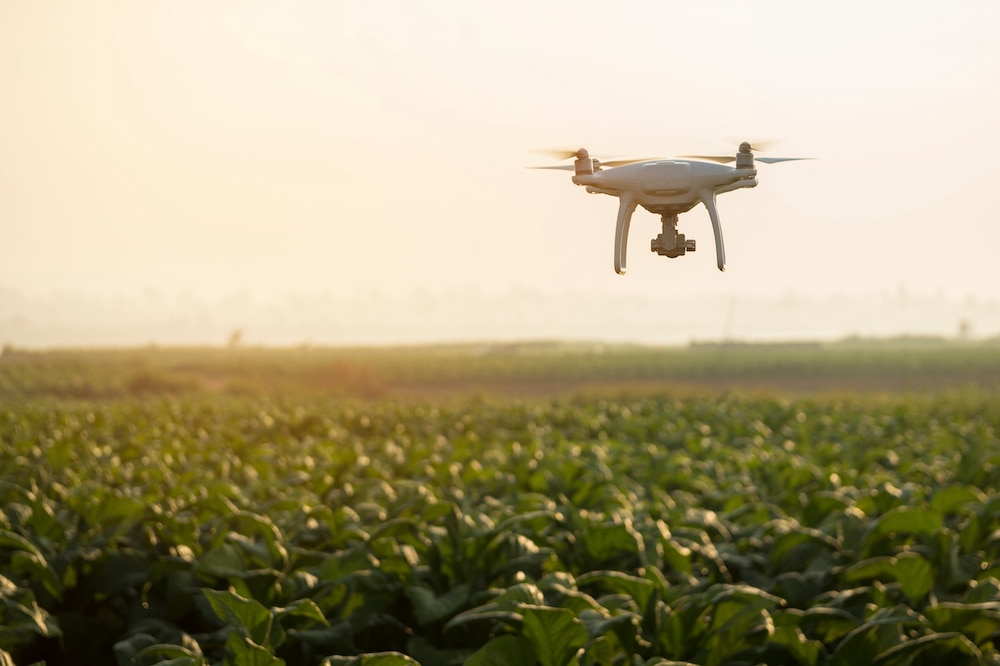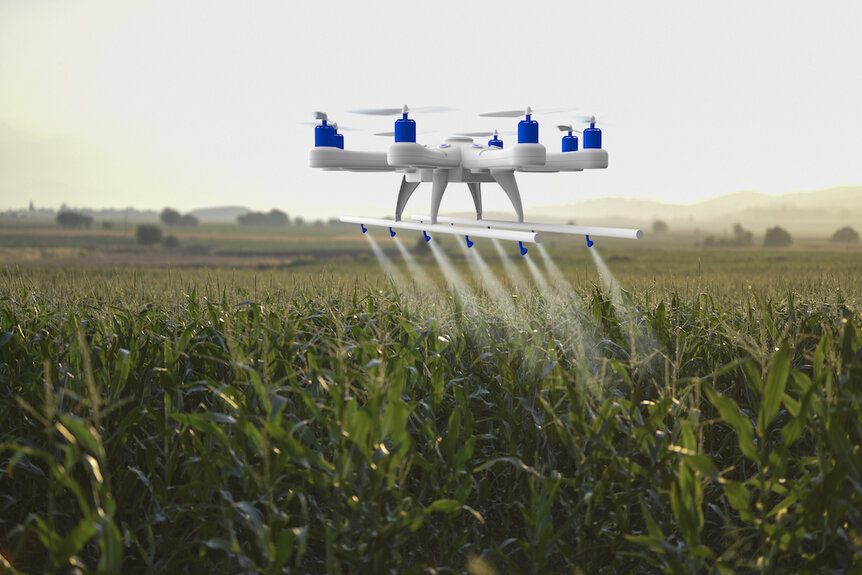Create a free profile to get unlimited access to exclusive videos, sweepstakes, and more!
Automated drones could be the flying scarecrows of the future
Pay no attention to the birds behind the curtain.

Scientists have just developed the coolest scarecrow since The Wiz, and it already has a brain. Sort of. Instead of anthropomorphic straw-filled mannequins populating fields, researchers are using flying robots to identify and scare away birds from agricultural fields.
Manoj Karkee and colleagues from the Center for Precision and Automated Agricultural Systems and the Department of Biological Engineering at Washington State University have developed a system whereby aerial drones can patrol and protect agricultural resources from pest birds. Their findings were published in the journal Computers and Electronics in Agriculture.
Karkee started working with farmers and other agricultural workers in 2010 and identified a need for better systems of identifying and deterring pest birds, which are responsible for significant crop losses — up to 67% — when not properly managed. To date, farmers have used a number of methods to deter birds, including conventional scarecrows, lasers, predatory birds like falcons, and nets. Birds, however, are intelligent and tend to find ways around static deterrents, leaving farmers with sunk costs and continually degrading solutions.
“We looked at the surveys and feedback from growers and they’re not really happy with the solutions they have. Birds will find a way to circumnavigate existing tools and get to the field. With UAVs, we saw as much as a 6 or 7-fold decrease in the number of birds that would feed on crops. On average, it was about a four-time reduction,” Karkee told SYFY WIRE.
The drones can be used in a couple of ways. First, they can make pre-programmed patrols of fields to act as a consistent background deterrent. At least at first, just their presence and the sound of their whirring rotors can be enough to keep birds at bay. The program becomes really effective, however, when you add a level of intelligence.
“We are using different types of sensors in fields presently, in wider and larger numbers. We would also have cameras onboard [the drones]. Algorithms can detect birds and tell the drones and they would automatically be sent to an expected location to intercept the birds even before they get into the field,” Karkee said.
When there are no birds present, drones would fly automated patrols in random patterns. Karkee explained this is important to add dynamics and create some unpredictability in the drones’ movements in order to prevent any habituation. The last thing we want is the birds learning the patrol patterns and sneaking in during a shift change like some high-flying prison break.
Once implemented, deterring pest animals could be just a single activity in a growing list of operations drones can carry out in agricultural settings. Scientists are also looking to drones to carry out a number of other functions including crop monitoring, pollination, and chemical delivery.
“Each of these field operations or activities would happen within certain time periods. For example, pollination occurs just for a week or so in the spring, whereas bird deterrents would have to occur a few weeks before harvesting. Crop monitoring might occur over the growing season. Chemical application might have to occur during the growing season and up to several days before harvesting. This tells us there is a good opportunity for one drone to be used for many different activities,” Karkee said.
The aim is to make the whole system as automated as possible, deploying a fleet of drones over a particular growing area. The size of the fleet is dependent on the area it is covering and the population of wild pest animals in the nearby environment, among other things. The drones would intelligently carry out their operations according to both the needs of the grower and real-time ecological activity. A single drone might be monitoring crop growth and break away from its assigned activities to chase away a crow or other pest bird, before returning. All of this could be managed by a single operator whose job is to ensure the drones remain within a controlled zone and troubleshoot any technical challenges which might arise.
Researchers plan to continue testing the technology over the next few years, looking for how birds react and adapt to the presence of drones. If they habituate quickly, scientists may need to add additional deterrents to the drones, like the sounds of predatory birds, more reflective surfaces, and enhanced randomization in their flight paths.
If effective, it could mean a significant increase in the number of staple food crops produced out of the same number of resources. That means a decreased load on the environment while netting more food for you, your family, and your little dog too.



























